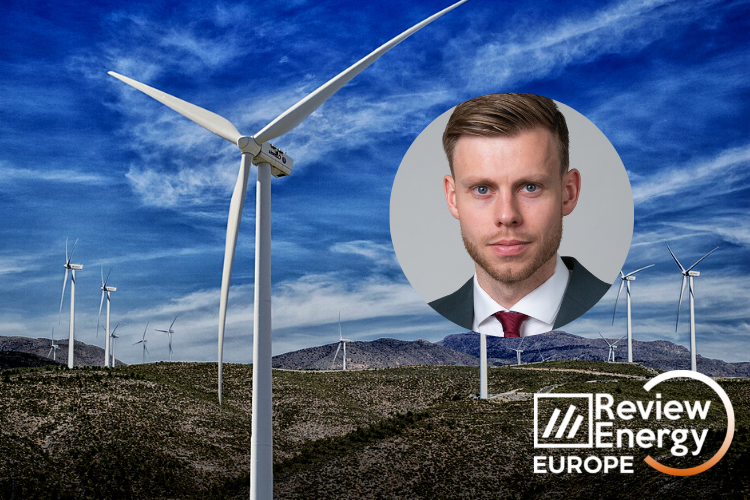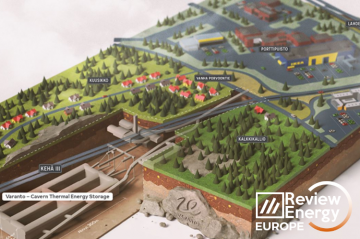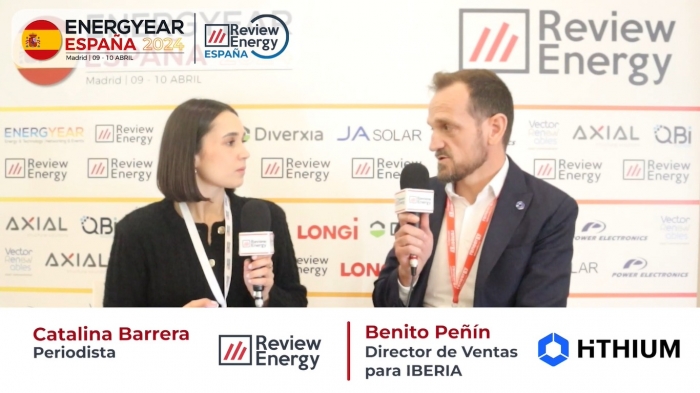
EU built only 16 GW new wind in 2022: How to restore investor confidence and ramp up supply chain?
Review Energy got a first-hand look at the latest WindEurope Statistics and 5-year outlook report. According to this document, Europe built 19 GW of new wind energy capacity in 2022. 16 GW of those were in the EU. That’s 40% up on 2021.
Germany built the most followed by Sweden, Finland, France and the UK. The continent now has 255 GW of wind energy capacity and 87% of the new wind capacity Europe built last year was onshore. There was only 2.5 GW of new offshore wind farms.
But for WindEurope it’s much less than what’s needed for the EU’s 2030 goals. And investments in new wind farms and new wind turbine orders were down in 2022: due to unhelpful Government interventions in electricity markets and inflation.
Christoph Zipf, Press and Communications manager at WindEurope, told Review Energy in an exclusive interview that the EU is continuing to solve the biggest issue for wind energy in Europe: permitting.
Review Energy (RE): We know that wind power investments in Europe fell in 2022. Inflation is the main reason but what other factors could have contributed?
Christoph Zipf (CZ): It's a mix of factors. Energy policy in Europe has entered something of a "polycrisis" in 2022. Covid is still with us – causing more trade disruption. Russia invaded Ukraine – plunging the continent into a serious energy crisis. The war further disrupted the supply of certain commodities and caused electricity prices to skyrocket. The price for steel, the main component in modern wind turbines, also increased sharply. The result wind turbines produced in Europe are now 25%-30% more expensive than they used to be two years ago. All of this is threatening the competitiveness of Europe's industry.
At the same time national Governments created massive uncertainty in the electricity markets. They did so in good faith – they wanted to protect citizens and companies from the high electricity prices that we saw last summer. But they created patchwork of uncoordinated market interventions. They implemented clawback measures and price caps that cut into the revenues of inframarginal producers of electricity. All of that was not helpful for investments. Especially in offshore wind where small changes to financing costs can have a huge impact on the overall project costs. As a result we did not see a single final investment decision on large-scale offshore wind in 2022.
RE: How to strengthen the supply chain and start to move away from dependence on China?
CZ: The European Union has completely understand the issues the clean tech sectors in Europe are facing at the moment. Competition from China. Competition from the US Inflation Reduction Act. At the same time difficulties to make the investments in new factories and workers that are needed to deliver the accelerated transition to renewables in Europe. The EU wants to support the industry with good policy measures. In March the European Commission will present three key pieces of legislation:
- A new EU Net Zero Industries Act to strengthen the industrial base for clean tech in Europe.
- A new EU Raw Materials Act to diversify the sourcing of raw materials and to start building up mining and refining capacities in Europe.
- A new EU Electricity Market Design to accelerate the transition to renewables and ensure that renewable investments in Europe remain attractive.
At the same time the EU is continuing to solve the biggest issue for wind energy in Europe: permitting. The revised Renewable Energy Directive will take care of that. It should be agreed before the summer.
RE: Is Europe able to attract back investors that have moved to the US and Australia?
CZ: Yes. We have highly innovative companies. We are continuously improving turbine technology. And we are introducing novel methods for the integration of high shares of renewables in the electricity system; to enhance biodiversity and wind energy; to make turbines more sustainable and circular. We are convinced that the European market for wind energy will remain highly attractive to international investors.
RE: Is a reform of the electricity market design, as proposed by the EU, necessary?
CZ: The current electricity market was built for an energy system that was dominated by fossil forms of power generation. But renewables have taken over a significant share of electricity generation in Europe. Wind energy is now 17% of all electricity generated in the EU. In Denmark it is 55% in Ireland 34% and in Spain more than 25%. These shares are set to increase, as the European Union is working towards the goal of climate neutrality by 2050. According to the European Commission's scenarios wind energy will generate 50% of EU electricity by 2050. The electricity market design must reflect that.
RE: What changes would such a reform require?
CZ: In the short term the electricity market design should aim to restore investor confidence. It should incentivize investments in renewables and buffer the effects of the war in Ukraine. In the long-run we will need an electricity market design that is fit for very high shares of renewables. Some countries want the latter right now.
Other countries want a two-step approach. They fear that with the war in Ukraine it is not the right time to change the whole electricity market design. We will see where we land in the end. Two things are sure. (1) Contracts-for-Difference will play a key role in the future electricity market design; (2) Contracts-for-Difference are not the only solution – there needs to be flexibility for Power Purchase Agreements (PPAs) and merchant forms of selling electricity.
RE: What are your views on the EU's Green Deal Industrial Plan?
CZ: Europe's wind energy supply chain continues to struggle with low volumes (due to unsolved permitting bottlenecks) and inflation in input costs. But it badly needs to grow: Europe doesn't have enough factories to build all the new turbines it wants.
The EU Net-Zero Industry Act should make state aid rules more flexible and facilitate grants and finance for investments in new plant and infrastructure. National investment tax credits have a key role to play. And the European Investment Bank should be allowed to finance individual plant investments.
The idea that Germany and France will benefit much more from this than others is wrong. New investments in offshore foundation manufacturing have just been announced in Spain and the Netherlands. Greece is upgrading a cable plant. And Poland is attracting investments in new turbine factories and port facilities.
RE: What will be the specific challenges for offshore wind this year?
CZ: There are challenges ahead for both onshore and offshore wind. But there are also success stories. For offshore wind the Iberian Island can become one of these success stories. Floating offshore wind gives Spain and Portugal a new perspective – they can now join the offshore wind club and produce large volumes of renewable electricity offshore. Spain wants to build up to 3 GW of offshore wind by 2030 and Portugal has even more ambitious targets. Companies are starting to invest in port facilities and production plants. This will lead to economic growth and thousand of qualified jobs in Spain and Portugal.








Comentarios
Sé el primero en comentar...